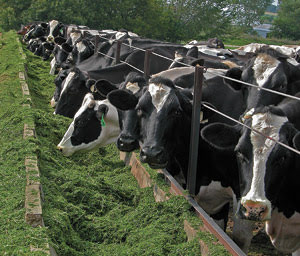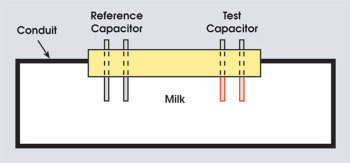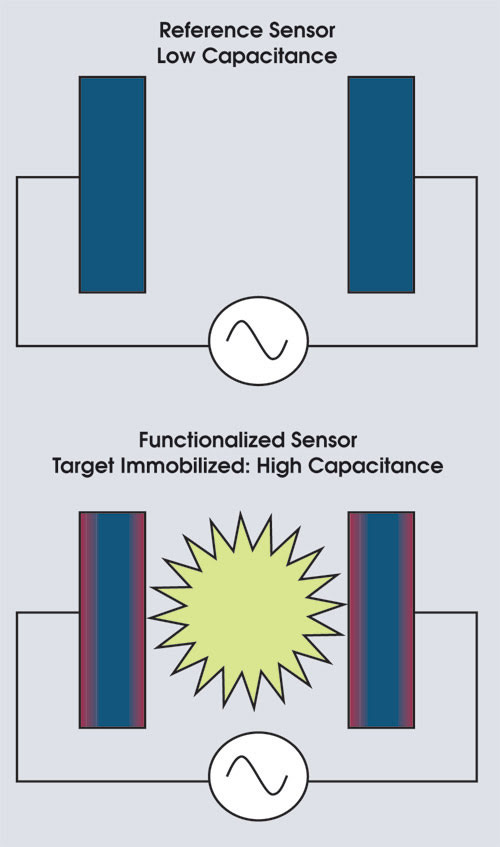Photonic and MEMS solutions abound in the food and beverage industries.
David R. Smith and David A. Gottfried, Infotonics Technology Center
The food and agriculture industry contributes significantly to the nation’s economy but often is an overlooked sector, particularly where advanced technology development is concerned. The nation is seeking significant enhancements to quality, safety and security, but consumers don’t want to see the price of food rise dramatically. Microelectromechanical systems (MEMS)-based technologies on integrated circuit chips are extremely cost-effective and allow significant gains in these areas without having a substantial effect on the pocketbooks of the consumer.
Recent collaborations between the Infotonics Technology Center in Canandaigua, and Cornell University in Ithaca, both in New York, have brought the need for advanced technology solutions for food and agriculture to the forefront. What started in 2004 as an inquiry to see whether MEMS could play a significant role has blossomed into numerous development possibilities.
A highly promising opportunity for MEMS exists in the dairy industry. The technology could help save money, improve productivity per cow and improve quality, which are important because the dairy industry is facing rising diesel fuel and feed prices, significant increases in global demand and possible increases in the cost of labor.

For example, MEMS technology could be useful in detecting mastitis in dairy cows. Mastitis is an inflammation of mammary tissue that costs the US dairy industry between $184 and $200 per cow, or about $1 billion annually. In its early stages, the disease is not visually detectable and usually is ignored. Current detection methods do not present a significant benefit to the farmer and require slow, manual sample preparation. Real-time early detection could save a large percentage of mastitis-related costs, as well as produce a higher-quality product that may even result in longer milk shelf life.
A technology developed at the Infotonics Technology Center and licensed to a local start-up company, BiSen Technologies Inc. of Canandaigua, uses a patent-pending permittivity-based sensor for real-time sensing of pathogens in milk. It immobilizes any pathogen — for the dairy industry, that includes E. coli as well as various strains of Streptococcus and Staphylococcus — and then the capacitance of a reference sensor and that of a functionalized sensor are compared. If the capacitances differ, the pathogen is present. The sensor system provides real-time indication, so no sample preparation is required (Figure 1).

Figure 1. A sensor set with functionalized and reference probes is inserted into a milk conduit.
Arrays of sensors can be fabricated on a chip no larger than a fingernail. Because the individual sensor elements are relatively small, a single immobilization event can be sensed as it occurs. Each individual sensor element or a group of them can be functionalized for a given specific target. Other sensor elements or groups also can be functionalized for other specific targets, allowing simultaneous testing for multiple targets. The arrays also allow redundancy, which reduces false positives.
For example, when an immobilization event occurs, an E. coli pathogen sticks to a molecular probe attached to the sensor array, resulting in a measurable change in the capacitance between the functionalized sensor and the reference sensor (Figure 2). With the use of mathematical algorithms, the rate of positive events in the array provides data about the concentration of the target pathogen. In the future, a device could be installed into new milking systems, or retrofitted into existing ones, to test milk in real time. The information from the sensor would indicate whether a cow is infected and, therefore, milking should be discontinued.

Figure 2. The reference sensor and the functionalized sensor are shown with an immobilized pathogen.
The Infotonics Technology Center is working with BiSen Technologies to pursue federal research and development funding through the US Department of Agriculture, and in other sectors that address the need to detect pathogens in food and in drinking water, which is a priority of the US Department of Defense.
Hyperspectral imaging
MEMS also can be used to create miniature hyperspectral imaging systems. SpectralSight Inc. of Canandaigua is miniaturizing such systems and developing a tunable filter that can detect certain bandwidths of light from the infrared to the near-infrared range.
Hyperspectral imaging has a variety of applications in food and agriculture. Tuned to specific frequencies of light, a system can detect areas in a crop field that may be infected with various fungal diseases or that require irrigation. Hyperspectral images of food on the shelf may help prevent spoilage through early visualization of conditions not apparent to the naked eye.
Another application for the technology is detecting counterfeit wine labels. Counterfeit labels on premium wines are a significant problem in the industry because counterfeiters produce labels for high-value wine and place them on less-valuable vintages of the same wine.
For example, the Chateau Petrus you bought for $5000, thinking it was vintage 1959, may in fact be a 1982 vintage that should sell for only about $250 to $300 per bottle.
There are subtle differences in the inks used by counterfeiters that could be detectable with hyperspectral imaging. For example, looking at an authentic label with the technique would reveal color characteristics that appear different from those found on the counterfeit label. The technology could be used by auction houses and other high-end wine retailers who regularly handle these expensive vintages.
Future developments include wireless use of MEMS, especially in the packaging and refrigeration industries, as well as the use of radio-frequency ID sensors. The convergence of MEMS and photonics-enabled technologies with the food and agricultural sectors is presenting significant growth opportunities for the future.
Meet the authors
David R. Smith is chief executive officer, and David A. Gottfried is a business development consultant with the Infotonics Research Center in Canandaigua, N.Y.; e-mail: [email protected]; [email protected].